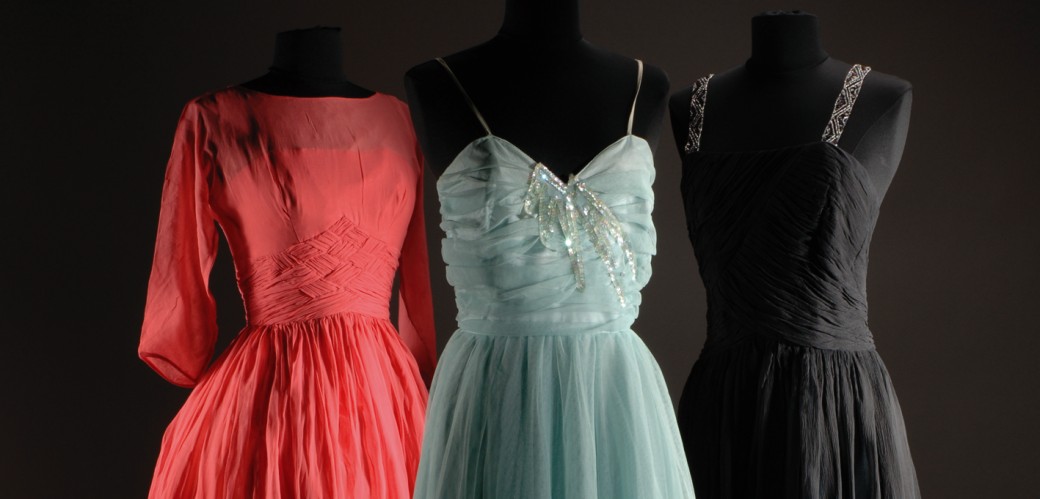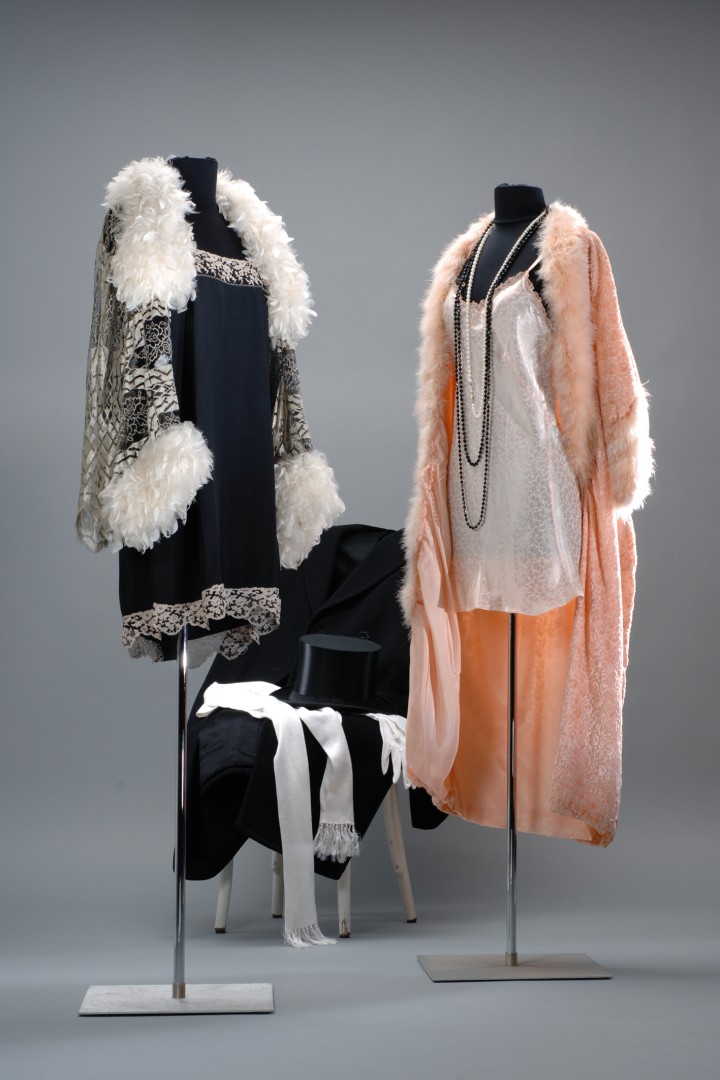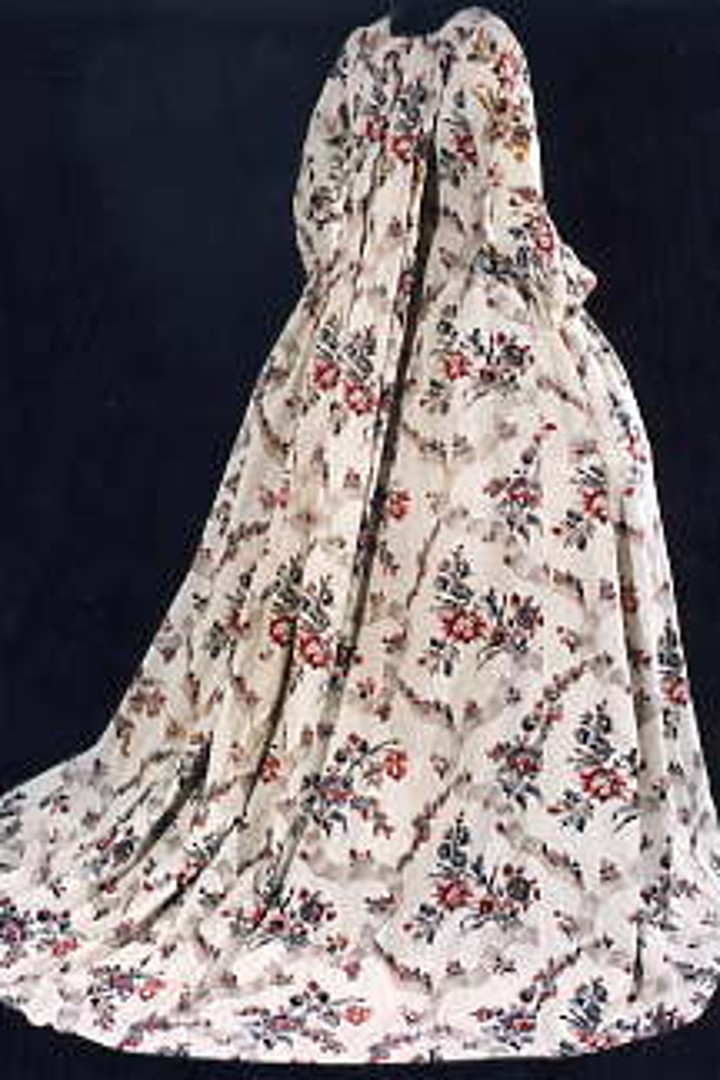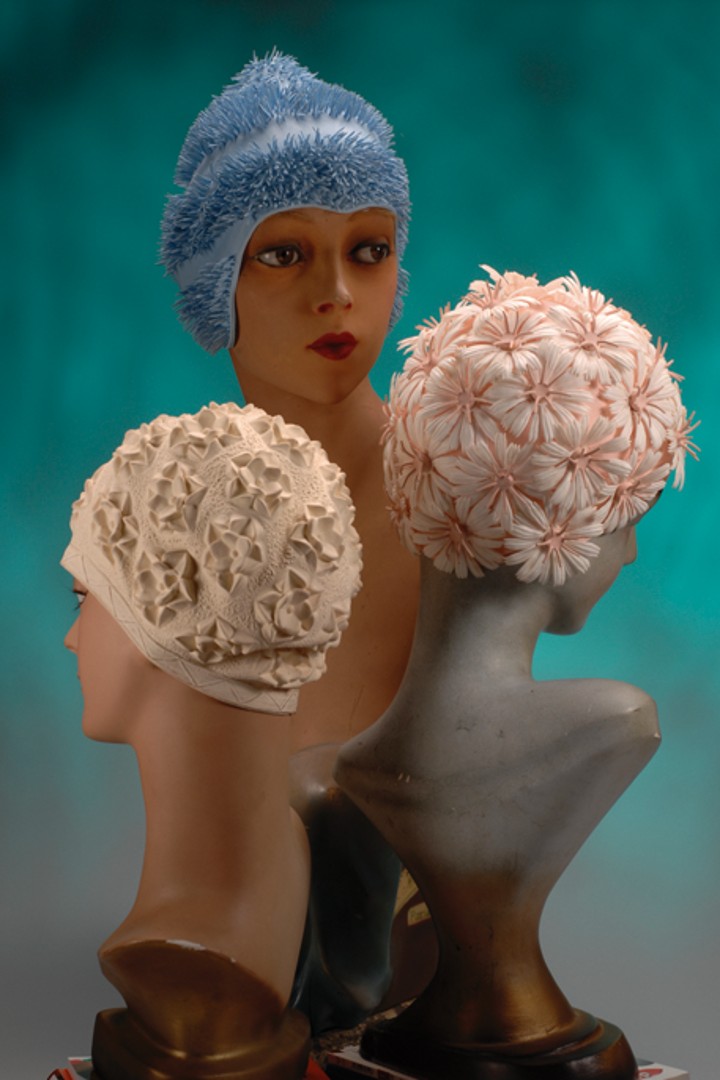

A collection of clothes at the LVR-Industriemuseum? What do they collect? Work clothes of former factory workers, protective coats of the steelworkers or the work clothes of scissor smiths, spinners and weavers? Certainly – such items of clothing are also stored in the repository but they only account for a small part of the large LVR- Industriemuseum textile collection. The greater part consists of clothing from all social classes - clothes for festive occasions to everyday items.

If one opens individual drawers and cupboards in the museum repository one finds for example a gentleman’s suit of a modern design dating from 2002. Made of intelligent “anti-stress fibres” it does not crease and is easy to wash – ideally suited to the businessman of today who has no time to take care of his clothes. Or the Charleston dresses from the 1920s which consist of a mere hint of material, chiffon as light as a feather.
In contrast to these dazzling evening dresses, the collection also has everyday dresses such as those worn during the day for example by secretaries. Alongside these are kept the opulent formal dresses worn by the middle class women in the 19th century: carefully worked silk dresses with chaste high-necked tops and narrow shoulders whilst below billowed a floor-length skirt made of an extravagant amount of material and given its shape by a frame like a crinoline. The dresses represented the wealth of the wearers and consequently the business success of their husbands.

The main interest of the LVR-Industriemuseum lies, however, with everyday clothing –this accounts for the greater part of the items in storage. For example, many items of clothing which are regarded as being characteristic for a specific period are to be found there.
The collection of cotton items from the late 18th and early 19th centuries is particularly worth a mention. Dresses of printed cotton, petticoats, corselets, capes which had been very fashionable since the mechanisation of cotton production and which nowadays are rare: items of clothing which not only illustrate which patterns, designs and colours were modern around 1800 but also reveal a great deal about the importance and the value of textiles in this period. The way in which fabrics were carefully handled can be read from almost every item.

Even these few examples indicate the criteria applied when building up the collection. The aim is not to have a complete history of fashion and costumes, but to focus on how clothing was produced and which materials were used.
The question how the attitude to clothing and consumption has changed over the past 25 years under mass production conditions, the increasing mobilisation of society and the changed sexual relations plays just as an important role. And finally: How do the social groups define themselves through clothing?